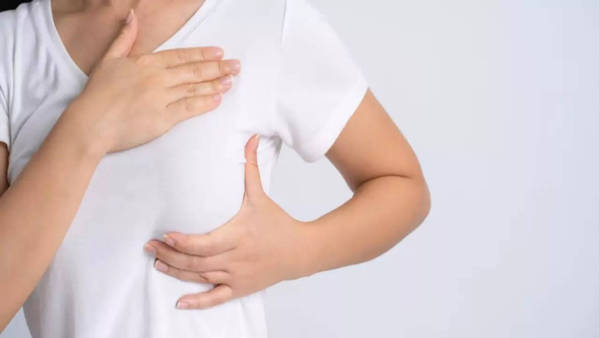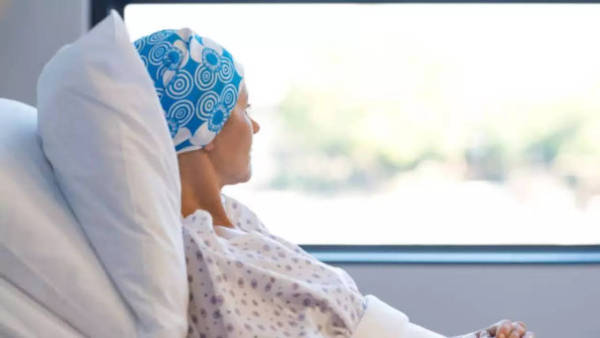Breast cancer rising in young women: Common symptoms of the deadly cancer you must know

Cancer is on the rise. Especially, in women under 50.
The alarming statistics recently came to light as a new American Cancer Society report revealed women in some age groups are being diagnosed with cancer more often than men. The findings suggested that higher cancer rates are shifting from men to women, and the gaps between sexes, as well as between older and younger adults, have narrowed greatly.
In 2022, around 9.7 million people died from cancer worldwide, which makes cancer one of the leading causes of death globally. In the same year, 670,000 women died from breast cancer globally. This was the highest cancer death rate for women worldwide.
2025 brings yet another alarming news regarding cancer, especially for young women under 50.
The annual report, published Thursday in CA: A Cancer Journal for Clinicians, found the cancer mortality rate declined by 34% from 1991 to 2022 in the United States.
The American Cancer Society’s data also noted cancer rates in women ages 50 to 64 are now higher than in men.
Among all the types, breast cancer is the most common cancer in women both in the United States and worldwide. In 2022, there were 2,296,840 new cases of breast cancer in women and 670,000 deaths. It accounts for about one in four of all cancers in women.
What is breast cancer?
Breast cancer is a disease that occurs when abnormal breast cells grow into tumors. It can affect both men and women, but it's rare in men.

Symptoms:
Breast cancer can cause several common symptoms, such as:
Lumps: A new lump or thickening in the breast, chest, or armpit, a lump that doesn't even hurt might be indicative of breast cancer.
Skin changes: Dimpling, puckering, or irritation of the breast skin are quite worrisome. If you notice redness, flaky skin, a rash in the breast or nipple area, or scaly skin on or around the nipple - reach out to a healthcare professional for a screening.
Nipple changes: A change in the shape of the nipple such as it turning inwards, or a rash on the nipple can be a sign of breast cancer. Nipple discharge, especially if it's bloody or happens in only one breast, pain in the nipple area, or pain in the breast or armpit that doesn't go away are symptoms of breast cancer.
Breast size or shape: A change in the size or shape of one or both breasts can also indicate a developing tumor in your breast.
Orange peel texture: Thickening of the skin that makes it look like an orange peel.
Ulcer: An ulcer on the breast or nipple, sometimes extending to the areola, is a sign of breast cancer.
Bone pain, Dry cough, Weight loss, Headaches, Vision problems, Seizures, Balance problems, and Confusion can also be indicative of breast cancer.
Types of breast cancer:
There are many types of breast cancer, including invasive, non-invasive, and rare types. The most common types are ductal carcinoma and lobular carcinoma.
Common types:
Ductal carcinoma: The most common type of breast cancer, starting in the milk ducts.
Lobular carcinoma: The second most common type of breast cancer, starting in the milk glands.
Invasive ductal carcinoma (IDC): A type of breast cancer that starts in the milk ducts and spreads to other tissues in the breast.
Invasive lobular carcinoma: A type of breast cancer that starts in the milk glands and spreads to other tissues in the breast.
Ductal carcinoma in situ (DCIS): An early form of breast cancer.
Triple negative breast cancer: A type of breast cancer where the cells don't have receptors for estrogen, progesterone, or HER2.
Rare types:
Inflammatory breast cancer: A fast-growing type of breast cancer that causes the breast to look inflamed.
Paget's disease of the breast: A rare type of breast cancer where cancer cells collect around the nipple.
Angiosarcoma: A rare type of cancer that starts in the cells lining the blood or lymph vessels of the breast.
 Prevention:
Prevention: Perhaps the best possible tool to prevent breast cancer is to go for regular screening. Breast cancer screening is important because it helps find breast cancer early when it's easier to treat. Early detection with the help of screening helps find breast cancer before it causes symptoms, like a lump in the breast. Not just that, early detection improves the chances of survival. Moreover, cancers found during screening are often smaller and haven't spread outside the breast.
Treatment:
Breast cancer is treated with a combination of surgery, radiation therapy, chemotherapy, hormonal therapy, targeted therapy, and immunotherapy. The treatment plan depends on the type of breast cancer and how far it has spread.
Surgery:
Lumpectomy: Removes the cancer and some healthy tissue around it. This is also known as breast-conserving surgery.
Mastectomy: Removes all breast tissue from the breast.
Radiation therapy: Uses high-energy rays to kill cancer cells and reduce the risk of recurrence
Chemotherapy: Uses special medicines to shrink or kill cancer cells. These drugs can be taken as pills or given intravenously. Common side effects include fatigue, nausea, and vomiting.
Hormonal therapy: Blocks cancer cells from getting the hormones they need to grow.
Targeted therapy: Uses drugs to block a specific protein in cancer cells, preventing them from growing.
Immunotherapy: Works with your body's immune system to help it fight cancer cells.


